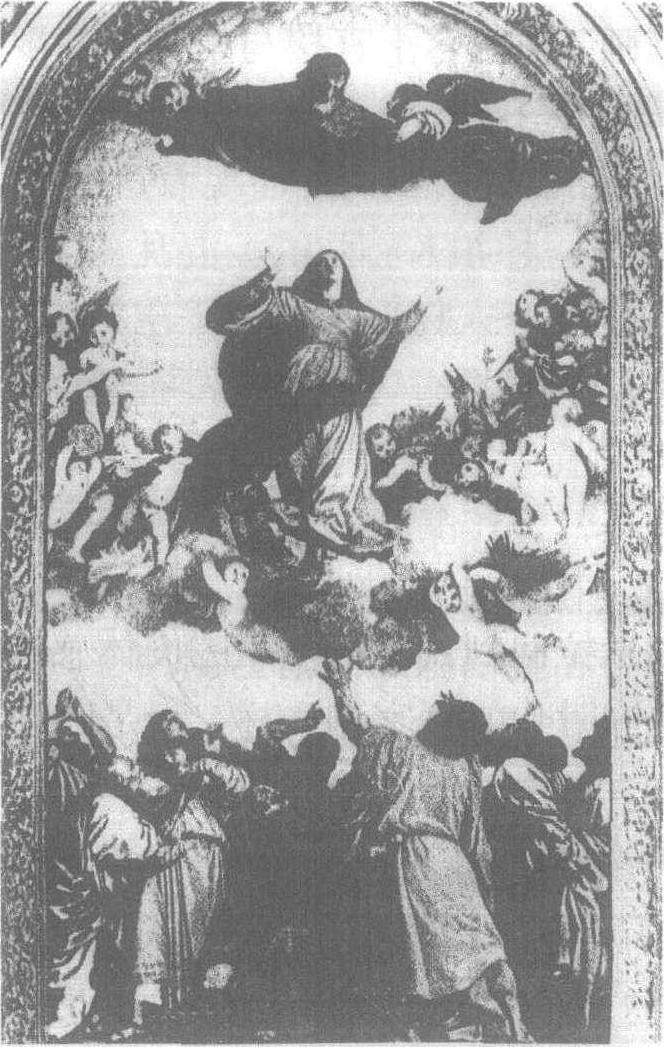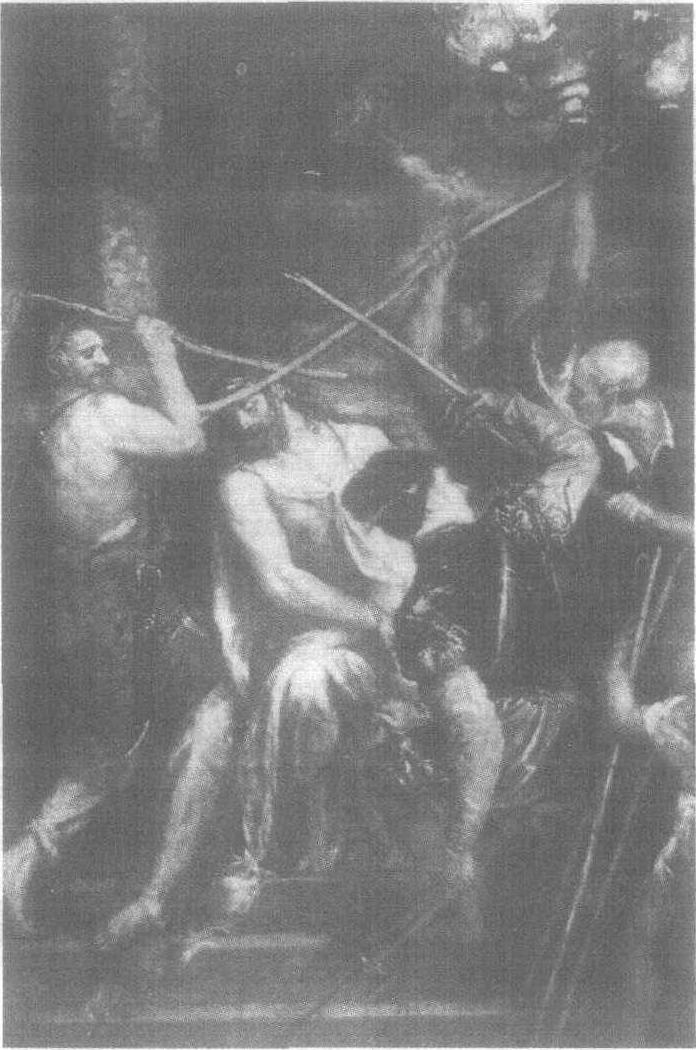提香《圣母升天》
在威尼斯圣马可广场西北,有两座著名的教堂,其中一座就是弗拉里教堂。提香于1518年所作的 《圣母升天》图,便挂在这教堂的神坛后面。我们走进教堂,从老远的地方就能看到那激动人心的活灵活现的场面。我们几乎无法区别它哪些是主题的戏剧,哪些是光与影的戏剧。
画上使徒们有跪着的,有翘首而立的,还有张开双臂跟在升天圣母后面追着跑着的。他们组成了一个矩形,构成全画的基础。我们的视线与使徒们的身高正好齐平,因而似乎我们也正走到他们中间去,一起观看这神圣的场面。一朵半月形的彩云在天空中渐渐化散开来,圣母马利亚头后的金色区域像光轮 一样光芒四射,她朱红的长袍随着上升而翻动飘转,她亮蓝的披肩被风吹得膨胀如兜。小天使们跟拥左右,一边飞翔嬉戏、欢欣雀跃,一边把载着她的云环推向高处,推向远方。九天之上,上帝正等待着迎接圣母的到来。他周围的一圈小天使,处在耀眼的金光之中,从而把故事同时也把画面引至终点。这幅画逐层展开,从人间一直画到天上,光和色浑然一体,把圣母冉冉升入天国去会见基督使徒们的动人情景,表现得极富热情而又感人至深。

圣母升天 提香
这一切你只消在一瞬间就可以看清楚。因为在构图上提香采取了正面处理的手法,因而使主题一目了然。然而在实际创作中,它又是一个充满了微妙变化和不断修整的过程。正如音乐家必须将一种有节奏的乐句展开来才能创作出整个乐章一样,画家也必须将一个一个的形状展开到实际的程度才能成为一幅画。绘画艺术常常只在通过手的活动而不必理会理性之中将某种韵律赋予画面的。
提香(约1476—1576)于16世纪之初,从卡道里的山村来到了繁华的水城威尼斯,他梦想着能在这里获得成功。他的老师是乔·贝利尼。在同窗中有前辈乔尔乔内。提香初期的抒情性作品,受这位早逝的英俊天才不少的影响,然而提香却活得长而又长,这使他几乎代表了整个16世纪威尼斯绘画的成就。他在稳静而内在的威尼斯绘画中,导入了充满生气的运动感觉和激烈的感情表现。例如在这幅《圣母升天》中,无论在宗教感情的渲染上,还是在画面的构成上(采用螺旋形结构造成一种强烈的腾升之感),都显示出了反宗教改革的巴洛克风格的端倪。
当然,提香有不少作品是带有向古典复归特点的。他和拉斐尔一样,常常从古代雕刻中汲取灵感的源泉。例如在《圣爱与俗爱》里的裸妇,就是原封不动地沿用了古代维纳斯的形象,但另一方面,她好像又被一种魔法的力量拉回到具有活生生的肉体感方面来。虽然提香和他同时代的画家们一样,也是以理想化的能力为前提的,但他更关心将生命和力量,灌注于人物之中。
色彩感觉丰富是威尼斯绘画的传统。比起一块一块单个色彩的美和鲜艳来,提香更注重整体色调的和谐,所以,他能够描绘出如此众多的有血有肉的人物,而又能将他们融和在充满空气的广阔空间之中。

荆冠 提香
提香圆熟时期的油画技法,都是用点点色斑,大胆而有棱角的笔触,一笔一笔地进行描绘的,因而从近处看是什么也看不出来,只有站远一些看方能看得很完整。人们常说威尼斯人是意大利绘画艺术中的着色能手,主要就是指提香晚年的作品如藏慕尼黑古绘画陈列馆的《荆冠》和藏爱尔米塔日美术馆的《圣塞巴斯先》等而说的。在这些作品中,那些调配得灼人的色彩,如同被拽到画布上去似的,它像进发出的火焰一样明亮,即使眼睛不好也能看得见,它使我们整个身心都感到由衷的温暖。